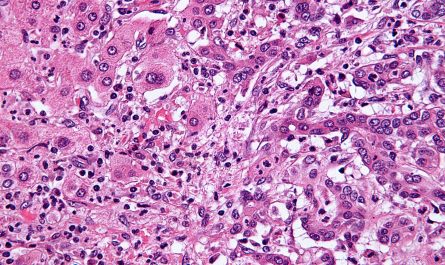
Lateral flow assay, also known as lateral flow immunochromatographic strip test, is a simple type of immunochromatographic test that can be used to detect the presence or absence of targeted substances in biological samples like blood or urine. It is a paper-based test that allows for rapid, on-site testing through capillary action without the need for specialized equipment or training.
How Does it Work?
The lateral flow assay consists of a strip of nitrocellulose or other material containing lines of various capture reagents or “test lines” and a conjugate pad that contains detectably labeled reagents. A liquid sample is applied to the sample pad at one end of the strip and starts to flow up the strip via capillary action. If the analyte being tested for is present in the sample, it will bind to the colored conjugate particles as the sample migrates along the strip. The particle-analyte complex then reaches and is captured on the test line by immobilized capture molecules. This causes the test line to appear as a colored line, indicating a positive result. The remaining unbound particles continue to migrate along the strip and are captured at the control line, which always appears to indicate that the test has worked properly. The result can usually be read within 5-30 minutes.
Applications of Lateral Flow Assay Testing
Pregnancy testing: The most common application of lateral flow assays is home pregnancy tests which detect human chorionic gonadotropin (hCG) hormone in urine. A positive result occurs when hCG in the urine binds to antibodies on the test strip.
Infectious disease testing: Lateral flow assays are often used for rapid testing of infectious diseases like influenza, HIV, malaria, hepatitis C, streptococcus, etc either at the point-of-care or for home testing. These tests detect antigens or antibodies specific to the pathogen.
Cardiac marker testing: Cardiac biomarker tests like troponin are available in lateral flow format for rapid detection of myocardial infarction from fingerstick blood samples.
Drugs of abuse testing: Instant urine screening tests are available for detection of illegal drugs like cocaine, amphetamines, opioids, cannabis, etc in workplace and forensic settings.
Fertility testing: Ovulation predictor kits detect the luteinizing hormone surge which indicates imminent ovulation. Some kits also measure estrogen and progesterone levels.
Advantages of Lateral Flow Assay Testing
– Rapid results – Most lateral flow tests provide results within 10-30 minutes, which is much faster than laboratory-based assays.
– Easy-to-use – The simple design requires neither instrumentation nor technical skills to perform. Samples can be applied directly onto the test strip.
– Low cost – Lateral flow assays have lower production costs compared to centralized laboratory methods and equipment requirements are minimal.
– On-site testing – The portability of lateral flow tests allows near-patient or point-of-care testing in community healthcare centers, doctors’ offices, etc without the need to send samples to a laboratory.
– Qualitative results – Though limited to detecting either presence or absence of the target analyte, lateral flow tests provide definitive yes/no results suitable for basic diagnostic needs.
Limitations of Lateral Flow Assay Testing
– Less sensitive than laboratory assays – Limits of detection for analytes may be higher compared to sophisticated quantitative assays. Unable to detect low levels.
– Subjective result interpretation – Visual interpretation of test lines can be affected by user and may lack objectivity compared to instrument-based readouts. Can produce invalid or inaccurate results.
– Inability to quantify results – As lateral flow assays only provide qualitative results, they cannot measure actual concentration levels of analytes in samples which may be required for certain diagnostic and monitoring needs.
– Limited multiplexing capability – Most lateral flow formats can detect only a single analyte. Testing for multiple targets simultaneously requires separate test strips or advanced multiplex technologies.
– Shelf life concerns – Quality can degrade with temperature fluctuations during storage and distribution under field conditions if cold chain is compromised. Expiry dates need to be closely followed.
– Interfering substances – Certain sample components like medications, pH, proteins, etc. can potentially interfere with binding reactions and produce erroneous results.
In summary, while lateral flow assays offer unparalleled ease-of-use, speed, affordability and decentralization of testing, their analytical performance is inferior to laboratory assays in terms of sensitivity, specificity and reproducibility. But they fill an important niche for rapid preliminary or point-of-care testing where definitive quantitative results are not essential. With continuous technological refinements, these simple paper-based tests will continue impacting public health globally by enabling diagnosis closer to communities.
*Note:
1. Source: Coherent Market Insights, Public sources, Desk research
2. We have leveraged AI tools to mine information and compile it


